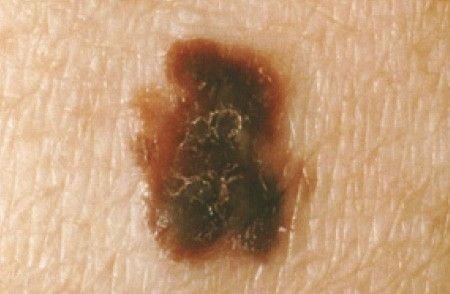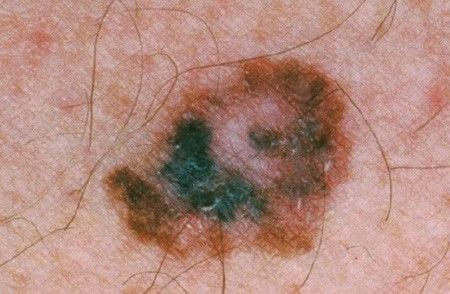Skin Cancer Treatment In North Logan, UT
Skin cancer is the most common cancer. Current estimates are that 1 in 5 Americans will develop skin cancer in their lifetime.
When detected early, skin cancer is highly treatable. The most common warning signs of skin cancer include changes in size, shape, or color of a mole or other skin lesion or the appearance of a new growth on the skin.
SKIN CANCER AFFECTS EVERYONE
Anyone can get skin cancer, regardless of skin color. Some people have a higher risk of developing skin cancer than others. Age is a key risk factor, but there are many other factors.
People with a higher risk for skin cancer have:
- Light colored skin
- Skin that burns or freckles rather than tans
- Blond or red hair
- Blue or green eyes
- More than 50 moles
- Irregularly-shaped or darker moles (nevi) called “atypical” or “dysplastic”
Your medical history can also increase your risk of getting skin cancer. You have a much greater risk of developing skin cancer if you have:
- History of sunburns, especially blistering sunburns
- Used (or use) indoor tanning devices
- Received an organ transplant
- Had skin cancer (or a blood relative has/had skin cancer)
- A weakened immune system
- Been exposed to cancer-causing compounds such as arsenic or coal
- An area of skin that has been badly burned, either in an accident or by the sun
TYPES OF SKIN CANCER
Skin cancer can happen anywhere on the skin or even in the eye, mouth, or genitalia. Skin cancers are more common on parts of the body that are exposed to the sun. The most common types of skin cancer are:
Basal Cell Carcinoma (BCC)
BCC is the most common type of skin cancer. BCC appears on the skin in many shapes and sizes. You may see a dome- shaped growth with visible blood vessels; a shiny, pinkish patch; or a sore that heals and then returns. BCC usually develops on skin that receives lots of sun, such as the scalp, face, nose, neck, and hands. BCC rarely spreads to other areas of the body, but it can grow deep into tissue and bone.

Squamous Cell Carcinoma (SCC)
SCC is the second most common type of skin cancer. SCC appears on the skin in many shapes. You may see a crusted or rough bump; a red, rough flat patch; a dome-shaped bump that grows and bleeds; or a sore that does not heal, or heals and returns. SCC commonly develops on skin that is exposed to the sun, such as the face, ears, lips, back of the hands, arms, and legs.
SCC can also develop on areas of the body that are not exposed to the sun, such as inside the mouth or on the genitals. Smoking or chewing tobacco may increase the risk of getting SCC in the mouth or throat. Left untreated, SCC can spread to other parts of the body, making treatment difficult.

Melanoma
Melanoma is the deadliest form of skin cancer. It may develop on normal skin or in an existing mole. A change in the shape, color, or size of a mole can be a sign of melanoma. Other changes to watch for include a mole that becomes painful or begins to bleed or itch.
Some melanomas develop on normal skin. A new growth, particularly one that does not match your other moles, could be melanoma.
Melanoma can also develop under fingernails or toenails. This will look like a brown or black streak underneath the nail.
Although melanoma is more common in those with light colored skin, people with skin of color also get melanoma. In skin of color, melanoma usually appears on the palms of the hands, soles of the feet, under a nail, in the mouth, or on the genitals.
ABCDEs of Melanoma
When detected early, melanoma is highly treatable. Performing skin self-exams can help you find skin changes that could be an early melanoma. When looking at your skin for signs of melanoma, follow the ABCDEs:
 A stands for ASYMMETRY; one-half does not look like the other half.
A stands for ASYMMETRY; one-half does not look like the other half.
 B stands for BORDER; irregular, scalloped, or poorly defined border.
B stands for BORDER; irregular, scalloped, or poorly defined border.
 C stands for COLOR; varied from one area to another; shades of tan and brown, black; sometimes white, red, or blue.
C stands for COLOR; varied from one area to another; shades of tan and brown, black; sometimes white, red, or blue.
 D stands for DIAMETER; melanomas are most often greater than 6 millimeters (the size of a pencil eraser) when diagnosed, but they can be smaller.
D stands for DIAMETER; melanomas are most often greater than 6 millimeters (the size of a pencil eraser) when diagnosed, but they can be smaller.
 E stands for EVOLVING; a mole or skin growth that looks different from the rest or is changing in size, shape, or color.
E stands for EVOLVING; a mole or skin growth that looks different from the rest or is changing in size, shape, or color.
Make an appointment to see a board-certified dermatologist as soon as possible if you notice a spot or mole on your
skin that has any of these characteristics.
Actinic Keratoses (AKs)
Actinic keratoses (AKs) are common skin growths. AKs are considered precancerous. Left untreated, an AK may turn into SCC.
Most AKs are dry, scaly, rough-textured spots on the skin. AKs form on skin that receives lots of sun, such as on the head, including the ears, lips and scalp; arms; and hands. Women frequently get AKs on their legs. AKs can form, disappear, and then return.
THE IMPORTANCE OF SKIN EXAMINATIONS
You can perform a skin self-exam, which involves checking your skin for changes.
You can also receive a skin exam from your dermatologist. How often you should see your dermatologist for a skin exam varies from patient to patient. Your dermatologist will tell you how often you should have a skin exam.
HOW TO EXAMINE YOUR SKIN
A skin self-exam can help you find skin cancer early when it is most treatable. If you notice anything that is changing,
itching or bleeding, immediately make an appointment to see your dermatologist.
 How to examine your skin
How to examine your skin
EARLY TREATMENT HAS A HIGH CURE RATE
When caught early, skin cancer is highly treatable. Even melanoma, which can be deadly, has a cure rate of almost 100% when treated early.
Proper treatment begins with the right diagnosis. To diagnose skin cancer, a dermatologist performs a skin biopsy.
This is the best way to diagnose skin cancer. Your dermatologist can perform a biopsy during an office visit.
To perform a biopsy, your dermatologist will remove either the entire skin growth or part of it. The removed skin will be sent to a lab where it will be examined under a microscope.
If the diagnosis is skin cancer, your dermatologist will consider the type of skin cancer, the size and location of the skin cancer, and your health to determine the best treatment for you. When caught early and the entire growth is removed, further treatment may not be needed. If further treatment is needed, your dermatologist will discuss your treatment options and make recommendations.
All content solely developed by the American Academy of Dermatology. Copyright © by the American Academy of Dermatology and the American Academy of Dermatology Association.
Images used with permission of the American Academy of Dermatology National Library of Dermatologic Teaching Slides.
